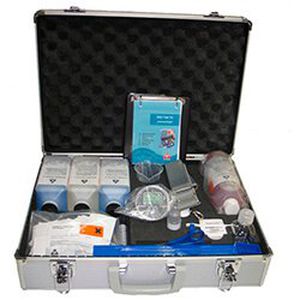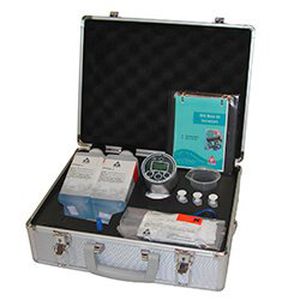
- Products
- Ship detector
- C.C. Jensen
Water-in-oil detector OCM 15 for ships

Add to favorites
Compare this product
Characteristics
- Type
- water-in-oil
- Application domain
- for ships
Description
The CJC™ Oil Contamination Monitor, OCM 15 measures wear generation in oil systems. Used for hydraulic, lube and gear oils.
Benefits:
Earliest possible warnings of wear generation
Condition based maintenance, instead of breakdowns
Increase your ROI and protect the investment
Remote online monitoring
Monitoring on the smallest micron particles using the CJC™ OCM 15 gives the earliest possible warning for breakdowns.
Major damage can be PREDICTED and PREVENTED by stopping and repairing early in the wear process. This obviously will improve PROFIT.
Function
The CJC™ OCM measures according to the ISO: 4406 standard. The monitor is specially designed for high viscous oils.
The CJC™ OCM is suited to measure in oils with large amounts of air-bubbles.
The water sensor measures relative humidity (%RH) in oil. The CJC™ OCM monitors upstream the filter i.e. on the dirty side.
Installation
The CJC™ OCM 15 measures according to the ISO: 4406 standard. The monitor is specially designed for high viscous oils.
The CJC™ OCM 15 is suited to measure in oils with large amounts of air-bubbles.
The water sensor measures relative humidity (%RH) in oil. The CJC™ OCM 15 monitors upstream the filter i.e. on the dirty side.
Data / COMMUNICATION delivery
The CJC™ OCM 15 is delivered with RS 485 Modbus RTU communication. As option, the CJC™ OCM 15 can be delivered with Datalogger, which gives easy access to data.
OPTIONAL
Alternative options for communication through CJC™ View software:
USBi for PC
VIDEO
Catalogs
No catalogs are available for this product.
See all of C.C. Jensen‘s catalogs*Prices are pre-tax. They exclude delivery charges and customs duties and do not include additional charges for installation or activation options. Prices are indicative only and may vary by country, with changes to the cost of raw materials and exchange rates.



